When you notice that you have a damaged tire sidewall, can you put glue on it until you have it checked by a tire specialist? We researched this question, and we'll share with you what we found out.
For cosmetic cuts or shallow cuts on the tire sidewall, you can use glue to patch them and prevent the damage from worsening. However, if the damage is so deep that it exposes the tire's internal parts or causes air bubbles on the sidewall, it is not advisable to use glue as a remedy. The tire needs to be replaced immediately for your safety.
Keep on reading to learn more about when you can use glue to fix your tire sidewall and when you shouldn't. We'll also teach you how to apply this remedy. This article will also answer if it is safe to drive with sidewall damage to your tire. Let's get started!
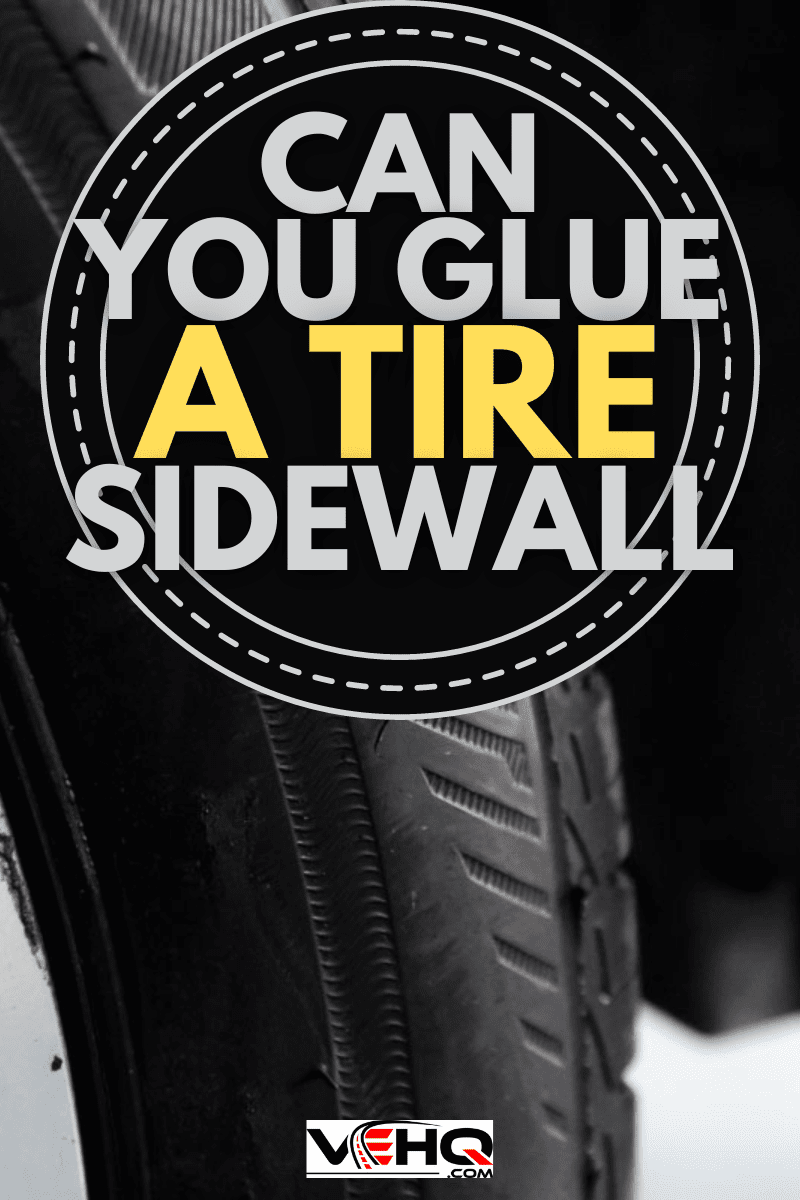
Can You Use Glue to Fix a Tire Sidewall?
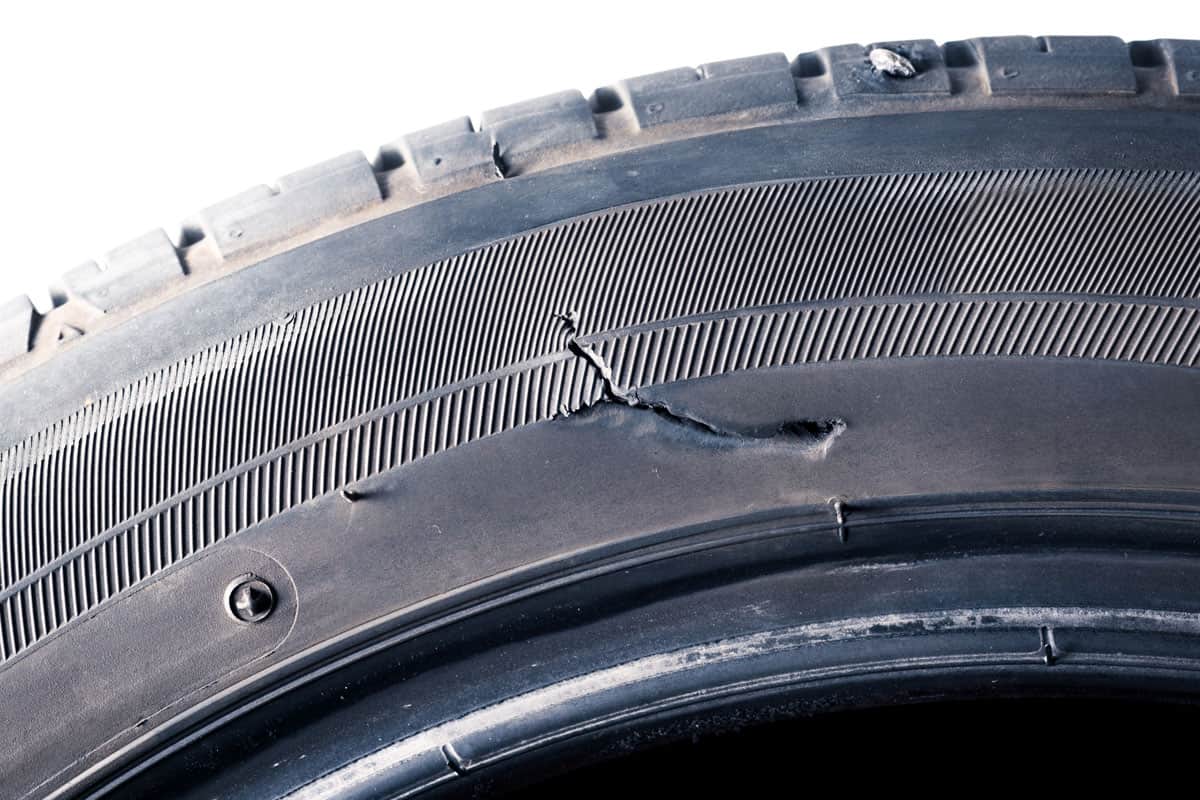
Tire sidewalls have a special role. They cover the internal structure of the tires, protecting them from dirt, debris, and water.
They also provide additional support to the tire so that it can stand up to the weight and pressure of the car. The markings on the sidewall also show you important information about your tire.
However, since the sidewall doesn't contact the road, it is made of thinner material. As such, it is prone to damage.
A tire sidewall can be damaged due to contact with sharp rocks and objects, trauma on a roadside curb, or an accident. When this happens, you should not continue driving.
You may not feel the immediate effect like when you have a flat tire or tire blowout but the end result is the same. It'll put you and other motorists in danger.
A visual inspection should be immediately conducted. A scratch, tear, puncture, bulge, or air bubble in this area can be a threat to the condition of the whole tire and wheel.
But it would depend on the extent of the damage. A small, shallow scratch or a cosmetic cut isn't serious, but when the tear exposes the tire's threads, which are about 3 mm to 4.5 mm into the tire, you need to have it checked by a tire specialist right away for proper assessment.
There are also cases when air bubbles or bulges occur on the tire sidewalls. These are indications that you need to have the tire replaced immediately as a blowout is imminent due to internal damage.
Using glue for small cosmetic cuts
When tire sidewall damage happens, you need to do some first aid so that it won't get worse.
To be clear, small cuts are those with a diameter of 1/4" or less for passenger tires and 3/8" for light-duty trucks. These are considered cosmetic cuts because they probably won't allow air to leak out of the tires.
There are different ways to remedy the situation, but one of the easiest and fastest ways is to use glue. You also can purchase sidewall repair kits in stores and keep them in your toolbox for situations such as this. You won't even have to remove the tire, and you can continue driving after a short while.
Check out this sidewall repair kit on Amazon.
It's a pretty simple process really. Here's how to go about it:
- Use the sandpaper included in the kit to clean the sidewall. Make sure that you remove any dirt and debris on the surface for proper adhesion.
- Once the sidewall is clean, apply glue on the damaged surface.
- Put the patch over the glue to cover the damage. Press firmly to secure it in its place.
- Check label instructions for adhesive curing time. You can also apply a curing accelerator to shorten the waiting time.
Click this link to find this curing accelerator on Amazon.
When the glue has cured properly, you're done! You can take your car out on the road again.
Keep in mind that the glue remedy is only recommended for shallow cuts. For more serious damage, you need to replace the tire with your spare and drive to the nearest auto repair shop to have it inspected by a pro.
Why Tires With Punctured Sidewalls Can't Be Repaired
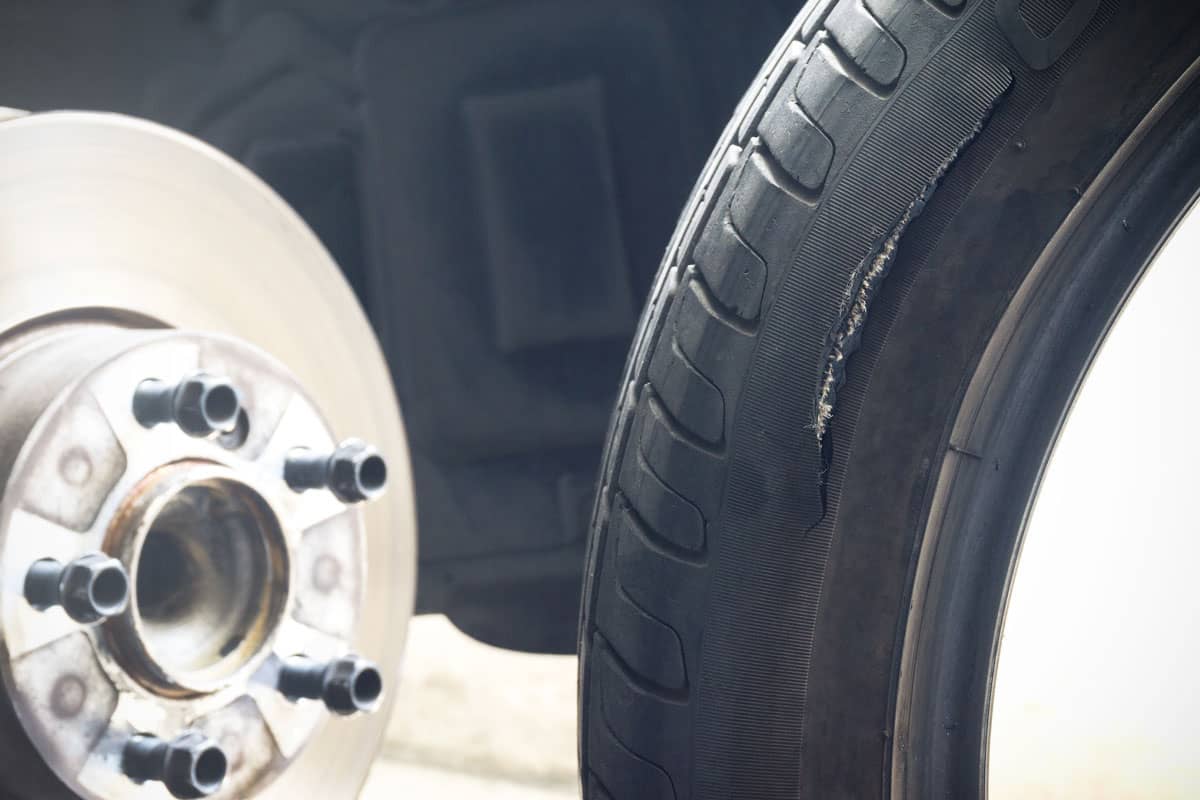
As discussed above, the remedy can only be applied to cosmetic or shallow cuts. The reason why it won't work for deeper cuts and punctures is that the thin surface of the sidewalls doesn't have any cords on their underside that would help hold the plug or patch in place.
This means that the air will continue to leak and compromise the integrity of the tire structure and consequently its performance and safety.
There is a high risk of a tire blowout, and serious accidents can happen on the road when you lose control of your tires.
That's why experts say that tire punctures with a depth of more than 1/4" for passenger tires and 3/8" for light-duty trucks shouldn't be repaired at all. It is strongly recommended that you have the damaged tire replaced for everyone's safety on the road.
Is It Safe to Drive With Sidewall Damage?
In general, it is unsafe to drive with a damaged tire. As we mentioned before, you need to consider how severe the damage is.
Cosmetic damage includes minor cuts or gashes on the sidewall's surface. There may be visible damage on the outer surface that doesn't reach the interior components of the tires, doesn't allow air to leak out, and doesn't affect its performance. This type of damage is not considered serious and can be repaired.
Nevertheless, you should take your car to a tire specialist who can perform a more thorough inspection of the tire's condition. This will assure you that the tire is good to take on the road.
With damage that cuts deep and exposes the tire's cords, it is unsafe to drive. This kind of damage will allow air to leak from the tire.
The tire may eventually lose its attachment to the wheel, which can lead to serious road accidents. You should replace it with your spare tire and buy new tires when you get to the auto repair shop.
When Should You Replace a Cut Tire?
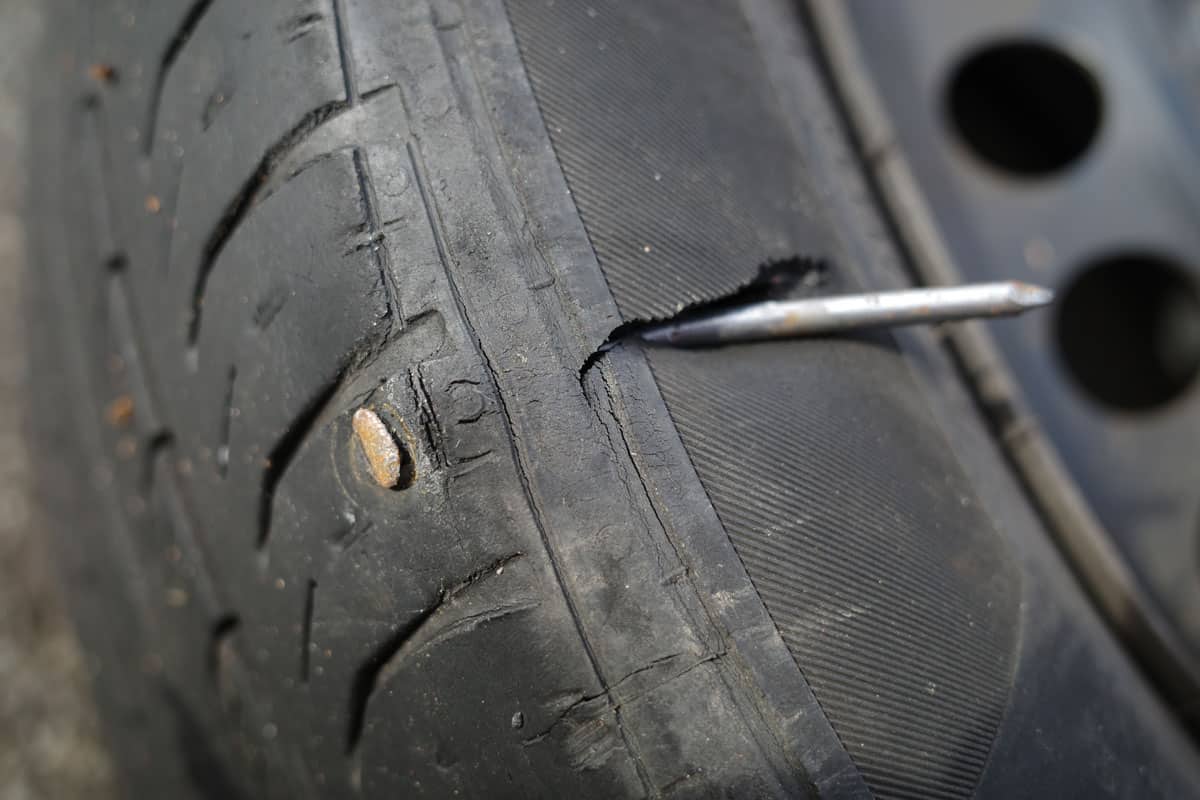
The basic rule is if the cut on the tire sidewall exposes the internal parts and allows air to leak, you should have it replaced.
Experts have specified that if the cut exceeds 1/4" for passenger tires and 3/8" for light-duty trucks, it is considered a major concern and should be replaced immediately.
However, even if it is just a minor cut, you should consider having your tires replaced. Any damage may make the structure of the tire weaker.
It is also suggested that you replace your tires when they are already showing signs of wear and tear, especially if you've been using them for more than five years.
At this point, the tire may already be losing its elasticity and becoming brittle. Little cuts may be more serious than you think. By getting new tires, you will be more confident that your car is safe to drive on different types of roads.
Final Thoughts
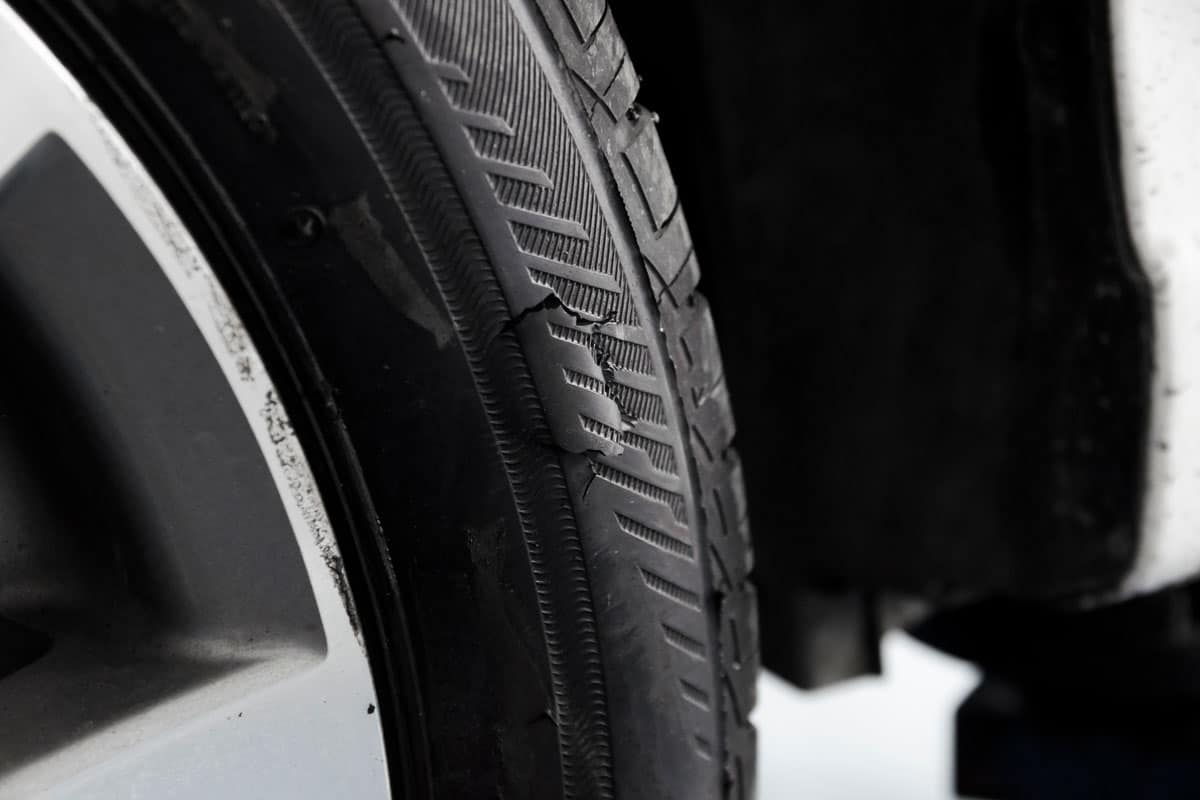
You should have glue and a sidewall repair kit in your toolbox for an easy fix of small cosmetic cuts on your tires. But if the damage is more serious, no amount of glue can fix it, so replacing the tire altogether is the best option.
If you enjoyed reading this article, you might also like the following posts:


